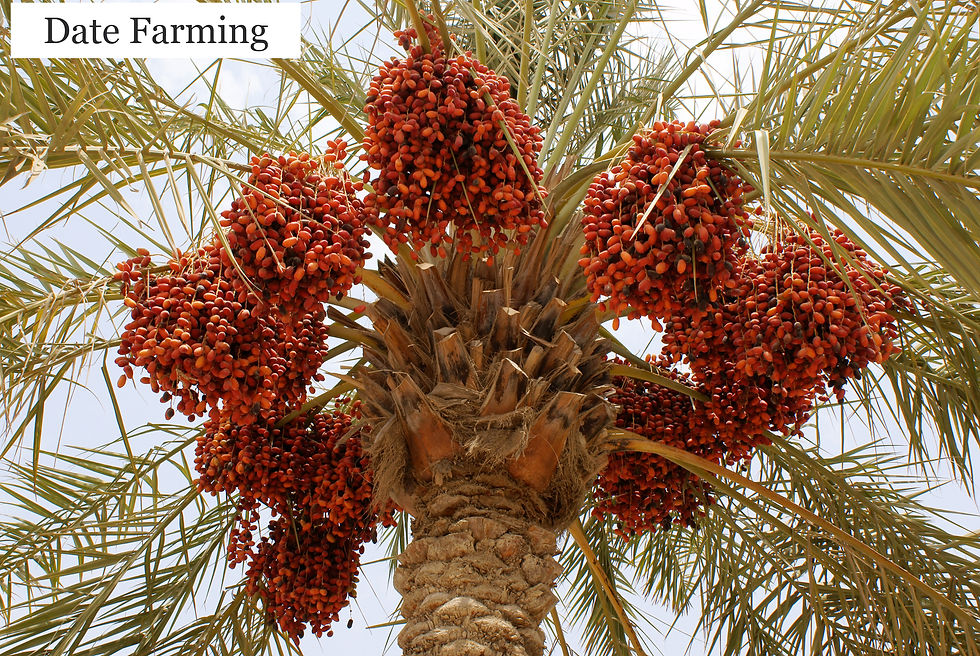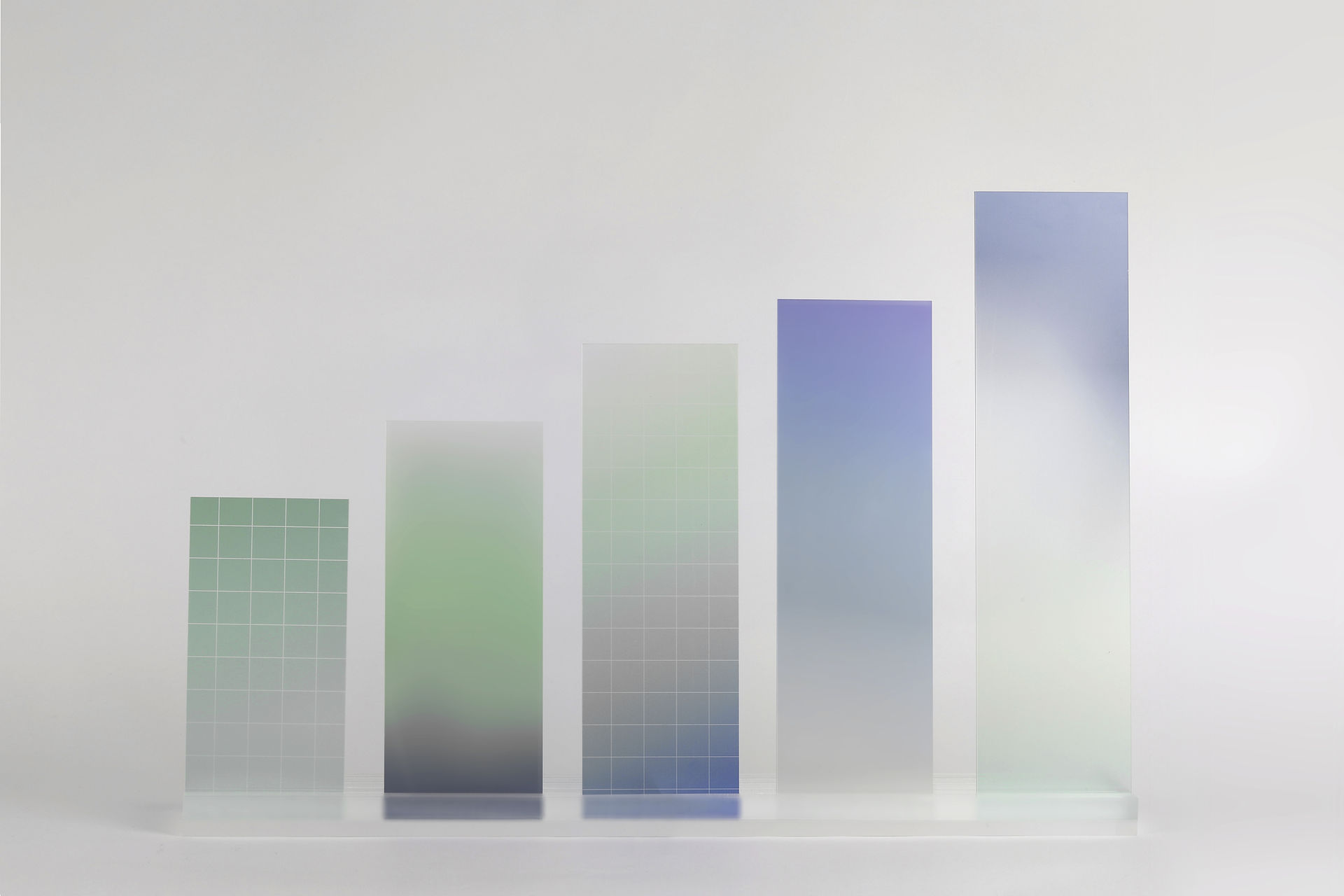🌴Desert Gold: The Sweet Science of Date Farming🌴✨🌞
- telishital14

- 6 days ago
- 4 min read
In the heart of arid deserts and warm oases, a sweet, chewy treasure grows — dates, the fruit of the majestic date palm 🌴. Often called the "bread of the desert," dates are not just delicious treats; they are power-packed superfruits with centuries of history, cultural significance, and economic value. This blog dives deep into the world of Date Farming, covering every detail from soil to harvest, benefits to business. So grab a cup of coffee ☕ and let’s embark on this journey through the date palm oasis!

🌱 What is Date Farming?
Date farming, also known as phoeniciculture, is the cultivation of the date palm tree (Phoenix dactylifera) for its sweet edible fruits. Native to the Middle East and North Africa, date palms thrive in hot, arid climates and are now cultivated in over 30 countries across the globe.
📍 Ideal Conditions for Date Farming
For successful date cultivation, certain climatic and soil conditions are essential:
☀️ Climate Requirements
High Temperatures: Dates require long, hot summers with temperatures often reaching 40–50°C (104–122°F).
Low Humidity: High humidity can cause fruit rot, making dry air ideal during ripening.
No Frost: Frost damages young shoots and affects flowering and fruit setting.
🌾 Soil Requirements
Sandy Loam Soil: Well-drained, deep sandy loam soil is ideal.
pH Range: 8.0 to 8.6 is suitable, although dates are fairly tolerant of saline soils.
Water Table: Should not be too high; waterlogging can damage roots.
💧 Water Requirements
Despite being drought-tolerant, date palms need regular irrigation, especially during fruit development. Drip irrigation systems are commonly used to conserve water.
🌴 Varieties of Dates
There are over 200 date varieties, each with its own texture, taste, and market value. Some of the most popular include:
Medjool: Large, soft, and sweet — known as the "King of Dates" 👑
Deglet Noor: Semi-dry, golden-colored — often used in baking
Barhi: Small, round, extremely sweet, often eaten fresh
Ajwa: Famous for its health benefits and religious significance in Islam
Zahidi: Dry and fibrous — excellent shelf life

🧑🌾 Cultivation Practices
1. 🌱 Planting
Typically propagated from offshoots (suckers) or tissue culture.
Planted at a spacing of about 8-10 meters apart to allow room for growth.
Takes about 4-5 years to bear fruit, but reaches full production in 7-10 years.
2. ✂️ Pruning
Regular pruning is essential to remove old leaves and maintain airflow.
Ensures proper light penetration and reduces pest risks.
3. 🐝 Pollination
Date palms are dioecious — meaning male and female flowers grow on separate trees.
Pollination is often done manually by transferring pollen from male to female flowers.
One male tree is enough for 50-100 female trees.
4. 🍯 Fertilization
Organic compost, nitrogen, phosphorous, and potassium are vital.
Micronutrients like magnesium, zinc, and boron improve yield and fruit quality.
🍇 Stages of Fruit Development
The date fruit matures in four stages, each with distinct characteristics:
Kimri (Immature): Green, hard, and bitter
Khalal (Mature): Crunchy, sweet, but not fully ripe
Rutab (Ripe): Soft, brown, and very sweet
Tamar (Fully Ripe): Wrinkled skin, fully dried on the tree
Dates can be harvested at Rutab or Tamar stage, depending on market demand.
🚜 Harvesting and Post-Harvest Management
🔪 Harvesting
Manually harvested using ladders or mechanical lifts.
Requires skilled labor to avoid fruit damage.
🧼 Post-Harvest Processing
Cleaning & Sorting: To remove dust and debris
Grading: Based on size, color, and texture
Drying: Sun drying or artificial dehydration
Packaging: In airtight, food-safe containers
Proper post-harvest care ensures longer shelf life and better market value.
🏆 Importance of Date Farming
🌍 Economic Value
Dates are a high-value crop with great export potential.
Countries like Saudi Arabia, UAE, Egypt, Iran, and Algeria lead global production.
🍽️ Nutritional Benefits
High in fiber, natural sugars, potassium, iron, and antioxidants
Helps in digestion, boosts energy, and strengthens the immune system 🛡️
Often recommended as a healthy sweet alternative for diabetics (in moderation)
🕌 Cultural and Religious Importance
Dates are mentioned 22 times in the Quran and are central to Islamic tradition.
Traditionally consumed to break fasts during Ramadan 🕌🌙
Symbol of hospitality and abundance in many Middle Eastern cultures
💼 Date Farming as a Business
📈 Market Trends
Global demand is rising for organic, premium, and processed date products.
Value-added products include:
Date syrup 🍯
Date paste
Stuffed or chocolate-covered dates 🍫
Date seed coffee
💸 Investment Potential
Initial investment is high (land, water, planting material), but returns are long-term and sustainable.
Government subsidies and agricultural incentives are available in many countries.

🌍 Leading Countries in Date Production (2024 stats)
Country | Annual Production (Million Tons) |
Egypt | 1.7 |
Saudi Arabia | 1.6 |
Iran | 1.3 |
Algeria | 1.2 |
UAE | 0.9 |
🧪 Innovation in Date Farming
Tissue culture propagation ensures disease-free planting material.
Precision agriculture using drones and IoT for irrigation and pest control.
Climate-resilient varieties are being developed to adapt to changing environments.
Date farming isn’t just about growing a fruit — it's about cultivating a tradition, sustaining economies, and nourishing people around the world 🌍. From its ancient origins to its modern innovations, the journey of the date palm is one of resilience, richness, and remarkable potential.
So, whether you’re an aspiring agro-entrepreneur, a nature lover, or simply someone who enjoys a delicious snack 🍬, date farming has something to offer. It’s a golden opportunity rooted in centuries of wisdom, ready to flourish in the farms of the future 🌴🌟.




コメント